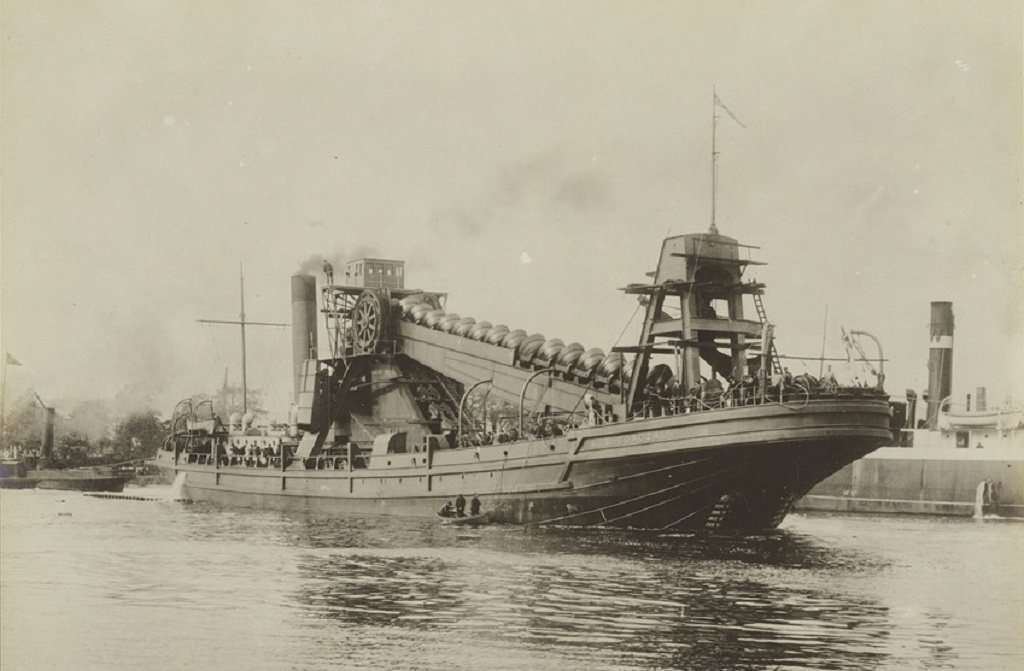A Scots ship which played an important part in American history is to be remembered at a revamped exhibition.
A multi-million pound revamp of Paisley Museum is currently underway, and when the team were decanting the Museum store for the refurbishment they came across a model of the Corozal dredger, which was built in Renfrew
Science curator John Pressly was tasked with researching the vessel’s history and discovered that it was the first ship to sail through the Culebra Cut in Panama.
The Corozal was built at Simons Shipyard in Renfrew. In 1911, the shipyard beat off competition from American yards to be commissioned by the US Navy to build the Corozal – one of the largest bucket dredgers the world had ever seen.
It travelled more than 19,000km around the southern tip of South America to lead other ships working on the Culebra Cut, digging a 12km channel on the final section of the canal as it meets the Pacific Ocean. The Culebra Cut is regarded as one of the greatest engineering feats of its time and this was dangerous work – surveyors had made incorrect calculations about the mountainous terrain and the area was liable to huge unpredictable landslides.
In total the Corozal was thought to have shifted more than 4 million cubic metres of earth. When work on the Cut was finished in 1913, the Corozal was the first ship to pass through it.
Scottish Field ask John how much he knew about the ship beforehand?: ‘Other than it was a dredger and had been built in Renfrew, nothing at all!
‘This really was a case of our research revealing an important untold story which had been largely forgotten about and one which we could bring back into the fold with a new display as part of the Paisley Museum Re-Imagined project.’

The Corozal dredger pictured in 1911 (Photo: George W. Goethals Collection, Special Collections, USMA Library)
While the River Clyde is well known for its rich shipbuilding heritage what is lesser known is the expertise developed by the three Renfrew yards around dredgers – which between them accounted for 80% of all dredgers built on the Clyde and created decades of new and innovative solution which opened up river ports across the world.
John discovered something which he was not expecting at all during his researches: ‘Probably the biggest surprise was that the Corozal managed to break the protectionist policy that saw all contracts for the Panama Canal being awarded to American companies despite them being more expensive than tenders received from outside the USA.
‘The awarding of the dredger contract for the Corozal to Simons led to protests, questions being asked in Congress and an attempt to overturn the award in favour of the American bid, which was twice as much as Simons had put in. The net result of this was that the Corozal was the only piece of large excavating machinery which was commissioned to work on the Panama Canal during the American phase of construction that was not made in the USA.’
In a modern twist, that same section of the Clyde is where Scotland’s Advanced Manufacturing and Innovation District will be located.
John added: ‘The Corozal model will be on display in Paisley Museum when we reopen. At present we don’t have a definite date for this but will be sometime in late 2023.’
Find out more about the £42 million Paisley Museum revamp HERE.
TAGS

